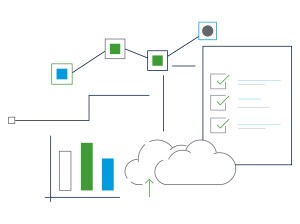This article answers the following questions:
- What does NAS 11 regulate?
- How do the solutions in NAS 11 differ from those set out in the International Accounting Standards?
On 29 May 2017, the Official Journal of the Minister of Economic Development and Finance published National Accounting Standard No. 11 “Fixed Assets” (NAS 11). The purpose of this document is to standardise the principles of accounting recognition and valuation of fixed assets in Poland and to ensure consistency in financial statements prepared in accordance with the Accounting Act. The standard has been in force since its publication and was first applied in the preparation of financial statements for the financial year commencing on 1 January 2017.
What is the purpose of NAS 11 and how does it differ from other standards?
NAS 11 sets out the principles for recognition, valuation, and accounting treatment of fixed assets, including assets under construction, in the accounting records. It also regulates the methods for making depreciation and amortisation charges, and provides guidelines for the presentation and disclosure of information on fixed assets in the financial statements.
The solutions adopted in NAS 11 are largely consistent with the provisions of the International Accounting Standards (IAS) and the International Financial Reporting Standards (IFRS), particularly IAS 16 “Property, Plant and Equipment”. However, the standard introduces certain differences. According to NAS 11:
- Revaluation-based valuation is permitted only under separate regulations,
- A distinction is made between component parts (section 4.17 of the standard), additional parts (section 4.19), and peripheral parts (section 4.20), which are not considered components within the meaning of IAS 16,
- Costs not included in the initial value of a fixed asset:
- future land reclamation,
- restoration of the site of use,
- other disposal-related costs,
- Costs included in the initial value of a fixed asset:
- financing costs arising from liabilities, including those other than loans and borrowings, incurred to acquire the fixed asset,
- foreign exchange differences (positive or negative) arising from foreign currency liabilities incurred for this purpose, without limiting them solely to exchange differences recognised as interest rate adjustments,
- Fixed assets intended for sale or return to owners are not excluded from fixed assets (although a different scope of disclosure of information on fixed assets is permitted).
Learn more about our services
Understanding National Accounting Standards helps avoid many accounting errors
The introduction of NAS 11 was significant for accounting in Poland. The Accounting Act of 29 September 1994 (consolidated text: Journal of Laws 2023, item 120, as amended) does not contain detailed regulations on fixed assets, which previously necessitated reliance on IAS solutions. Thanks to NAS 11, many interpretative ambiguities have been eliminated, and accounting practices have become more consistent and uniform, significantly facilitating the fulfilment of obligations and the preparation of documents required for financial audits by companies operating in Poland.
Frequently Asked Questions about NAS 11
Yes, NAS 11 is mandatory for entities applying the Accounting Act that recognise fixed assets in their accounting records.
The full text of the standard was published in the Official Journal of the Minister of Economic Development and Finance on 29 May 2017.
Anyone involved in accounting or finance – particularly those working in companies that hold fixed assets – should become familiar with the principles of NAS 11. Understanding these principles helps ensure proper bookkeeping and avoid errors that may prove problematic during the audit of financial statements.







